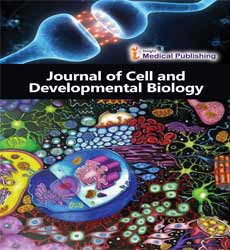SOX2+ Pluripotent Stem Cells in Ameloblastoma
Babichenko Igor Ivanovich1*, Rybal’skaia Viktorya Fedorovna1, Tsimbalist Natalya Sergeevna1, Semkin Vasiliy Aleksandrovich2
1Department of Pathological Anatomy, RUDN University, Russia.
2Department of oral surgery, Central Research Institute of Dental and Maxillofacial Surgery, Russia.
- *Corresponding Author:
- Babichenko Igor Ivanovich
Department of Pathologic Anatomy
RUDN University, Russia
Tel: +74954345300
E-mail: babichenko@list.ru
Received date: August 24, 2017; Accepted date: August 28, 2017; Published date: August 28, 2017
Citation: Ivanovich BI, Fedorovna RV, Sergeevna TN, Aleksandrovich SV (2017) SOX2+ Pluripotent Stem Cells in Ameloblastoma. J Cell Dev Biol. Vol. 1 No. 1:1
Ameloblastoma is benign odontogenic tumor that represents approximately 1% of head and neck neoplasms. Ameloblastoma is characterized by local aggressiveness and a high recurrence rate, with the predominant site of presentation is the mandible in the region of the third molar.
SRY related HMG box gene 2 (SOX2) is a transcription factor expressed in embryonic and adult stem cells. It exerts key functions in the maintenance of pluripotency and is one of the factors used in reprogramming induced pluripotent stem (iPS) cells. SOX2 stem cells also express in other epithelial organs, and SOX2 expression has been reported in several tumors. SOX2 is expressed in the epithelium of developing human and mouse teeth, so we suggest that ameloblastoma may originate from SOX2 dental epithelium.
Immunoperoxidase stains were performed according to a standard QUANTO protocol on the Autostainer 360 (Thermo Fisher Scientific, USA). The rabbit monoclonal antibodies included anti-Ki-67 (Clone SP6) and anti- SOX2 (Clone SP76), Cell Marque, Rocklin, CA, USA were used. DAB reaction had nuclear localization and scores were recorded based on the percentage of staining nuclei from 300 cells.
Descriptive analysis of staining characteristics was performed using median and range. All statistical analyses were performed using the Mann-Whitney U test and Spearman rank correlation in STATISTICA 10.0 and two-sided p<0.05 was considered to be statistically significant.
76 patients with a diagnosis of ameloblastoma of various age groups from 16 to 77 years old, at a median age of 46 years, were examined. Our results show that ameloblastoma consists of a proliferation of solid strands, cords and islands of odontogenic epithelium supported by connective tissue stroma.
Studied of biopsy and surgical material histological ameloblastoma of the following options: plexiform, follicular, granular cell, acanthomatous ameloblastoma, basal cell, unicystic, desmoplastic and peripheral ameloblastoma.
It is shown that histological variant of ameloblastoma and proliferative activity of cells of the peripheral of the layer at indexes Ki-67 and SOX2, can be considered as prognostic indicators of aggressiveness of growth of ameloblastoma. Basal cell variant of ameloblastoma on the vastness of damage, high cell proliferative activity and content of pluripotent stem cells is the most aggressive. Plexiform option ameloblastoma can be seen as aggressive in terms of the extensiveness of the lesion and content of SOX2+ stem cells, compared with the follicular and unicystic variants.
The conducted studies revealed a weak reliable correlation between proliferative activity and the size of ameloblastoma; moderate significant correlation between the dimensions of ameloblastoma and the expression of the SOX2 marker; a moderate significant correlation was found between the SOX2 marker and proliferative activity of ameloblastoma.
Given its potent role in modulating cell self-renewal and proliferation, SOX2 is rapidly emerging as an oncogene in many epithelial cancers. Pilot single nucleotide polymorphism array and comprehensive genomic analyses on human lung squamous cell carcinoma, lung small cell carcinoma, and esophageal squamous cell carcinoma show prominent SOX2 amplification. SOX2 has been linked to a more aggressive clinical course and poorer outcomes in ovarian cancer, urothelial carcinoma, breast tumors, esophageal carcinoma, nasopharyngeal carcinoma, and oral squamous cell carcinoma.
Our results suggest that ameloblastomas may originate from SOX2+ dental epithelium, and the presence of pluripotent stem cells and their proliferative activity may serve as indicators of the aggressive course of ameloblastoma.
Open Access Journals
- Aquaculture & Veterinary Science
- Chemistry & Chemical Sciences
- Clinical Sciences
- Engineering
- General Science
- Genetics & Molecular Biology
- Health Care & Nursing
- Immunology & Microbiology
- Materials Science
- Mathematics & Physics
- Medical Sciences
- Neurology & Psychiatry
- Oncology & Cancer Science
- Pharmaceutical Sciences
